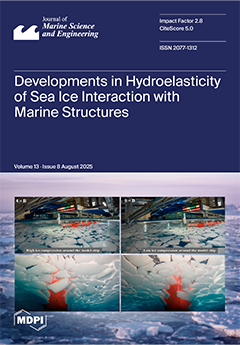Blackwater rivers are enriched in humic acids and impoverished in nutrients, sometimes discharging into oceans. Brazil has a coastal zone of about 8700 km, with several blackwater rivers discharging into the Atlantic Ocean, in addition to the Rio Negro of the northern Amazon
[...] Read more.
Blackwater rivers are enriched in humic acids and impoverished in nutrients, sometimes discharging into oceans. Brazil has a coastal zone of about 8700 km, with several blackwater rivers discharging into the Atlantic Ocean, in addition to the Rio Negro of the northern Amazon basin, which is the largest (about 1700 km long) and best-known tropical backwater river. On the other hand, only a few attempts have been made to deal with their hydrochemical composition and how it is related to the hydrochemistry of different water bodies nearby. This paper focuses on a sector of the Atlantic Ocean shore occurring in São Paulo State, enclosing two important Ecological Reserves, i.e., the Restinga State Park of Bertioga and the State Park of Serra do Mar–São Sebastião Nucleus, located at Bertioga and São Sebastião cities, respectively. Physicochemical parameters such as pH and electrical conductivity, as well as the composition of major constituents like sodium, potassium, calcium, magnesium, bicarbonate, chloride, sulfate, nitrate, etc., have been evaluated in two blackwater rivers and one blackwater stream to compare their relative inputs into the Atlantic Ocean. Traditional hydrogeochemical diagrams such as the Piper, Schoeller, Gibbs, van Wirdum, and Wilcox graphs were utilized for investigating the major features of the blackwater’s composition, revealing in some cases that they suffer an accentuated influence of the constituents occurring in the Atlantic Ocean waters, due to backward currents (coastal upwelling or tidal currents). Another highlight of this paper is the measurement of an enhanced concentration of dissolved iron in one blackwater sample analyzed, reaching a value of 1.9 mg/L. Such a finding has also been often reported in the literature for blackwater rivers and streams, as humic and fulvic acids are used to bind Fe
3+, keeping it in solution. Nowadays, iron in solution has been considered a very important element acting as a natural fertilizer of the coastal ocean because it is an essential nutrient to marine phytoplankton.
Full article





